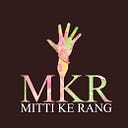Women and the Armed Forces
In the history of armed forces, women were only allowed in medical sectors until 1991. After 1992, SSC (Short Service Commission) was introduced, in which women were allowed to serve the nation and work with the army but for a tenure of 10 years only. While, till 2006 it was extended by another 4 years from 10 years to 14 years.
Feminism in the Armed Forces is well explained by the real-life story of Gunjan Saxena. The government rules and regulations stated that women weren’t eligible for pension as the minimum service required for pension is 20 years but they were allowed tenure of only 10 years. This was major discrimination and a major step taken towards the same was passing a petition, which was passed in 2003, onwards which the female officers started getting permanent commissions as well.
When talking about Armed Forces the most prominent names that come up are Gunjan, Avani, Mohana, and Bhavana.
Gunjan Saxena being the part of the Kargil War with 8 other women pilots had participated in the Vijay operation and proved their capabilities. They had an option to refuse and deny being the part of Vijay Operation but they neglected the option available and decided to continue serving for the nation in difficult times as well.
Avani, Mohana, and Bhavana are the first female fighter pilots and they grabbed this opportunity in 2015. It was the year when women were allowed and accepted as fighter pilots.
In the era, where girls’ education is promoted and appreciated but the commanding and combat positions are not offered to women because of prevailing social norms. It’s assumed that female candidates, as combat positions aren’t capable to sacrifice enough as they have a family to look after and even if this factor is ignored then they won’t be able to control the force working under them.
As time changes everything, In Feb 2020, Supreme Court passed an order saying that both male and female officers to be given the opportunity under 10 main streams of army forces but again the exception is prevalent in combat positions.
There is a huge shortage of soldiers and offices in the Armed forces but it can’t be fulfilled if the society neglects one whole section of the population.
When looked into this globally, Norway and Canada were the 1st few countries to allow women in the Armed forces in the 1980s. There are only 16 countries approximately where women are allowed to be a part of the Armed forces. yes, out of 195 countries only 16 counties. Out of those 16 countries, only 9 countries allow women in combat positions.
Women around the world look forward to a time when opportunities are not given based on societal norms and gender biases
Contributed by Anagha Mule content writer at Mitti Ke Rang
At Mitti Ke Rang, we started with a COVID-19 community support fundraising, as an emergency response to provide a safety net to families. This will help them survive in the lockdown period. We aim to directly support these families by providing a minimum wage, through transferring the same into their accounts or partner with local NGO, Organisation, Fellow or a Volunteer, and support them with groceries.
You can donate at:
Our Social Media:
LinkedIn — https://www.linkedin.com/in/mitti-ke-rang-mkr-81b230120/
Twitter: https://twitter.com/mitikerang?s=08
Instagram: https://www.instagram.com/mitti_ke_rang?r=nametag
Facebook: https://www.facebook.com/Mitikerang/
YouTube:
